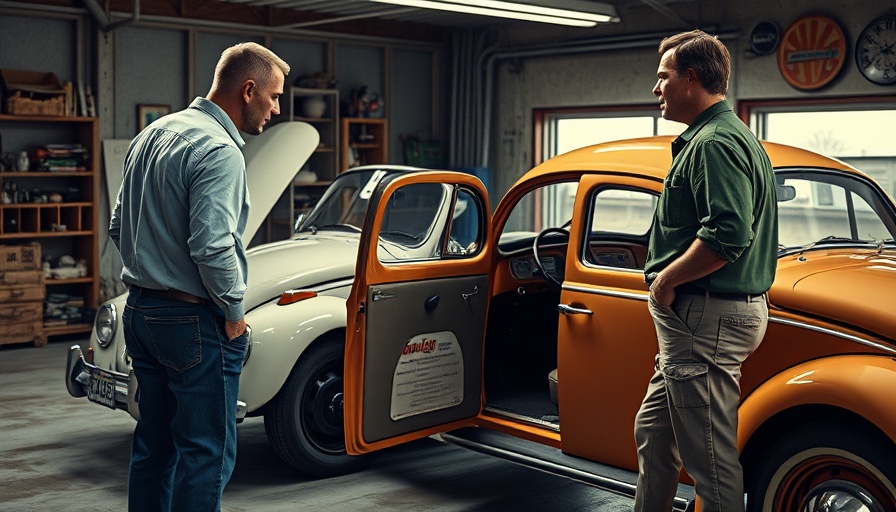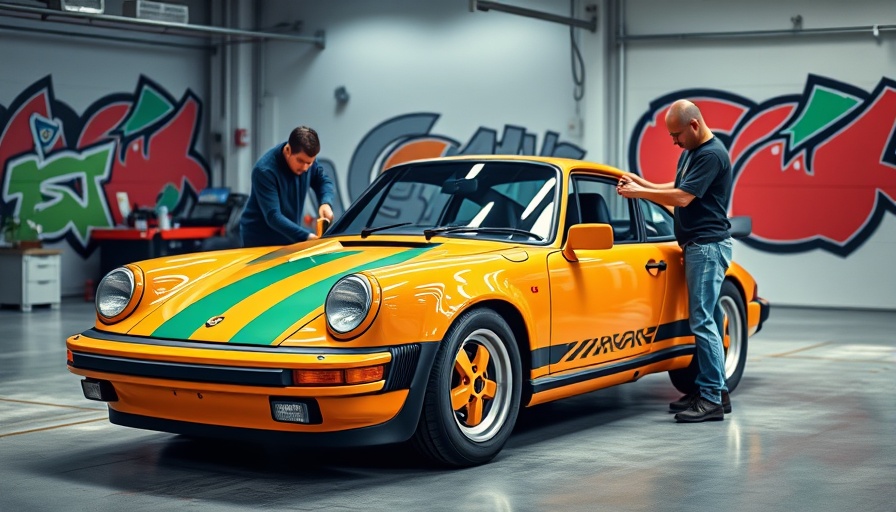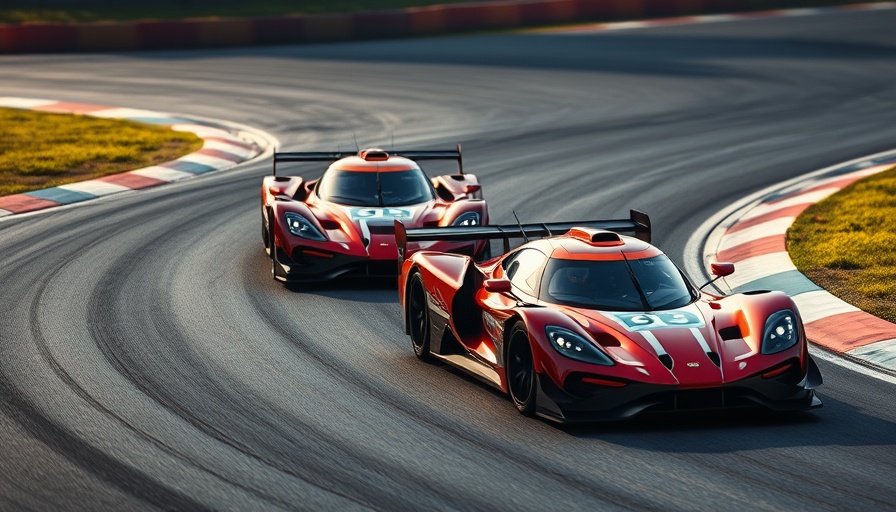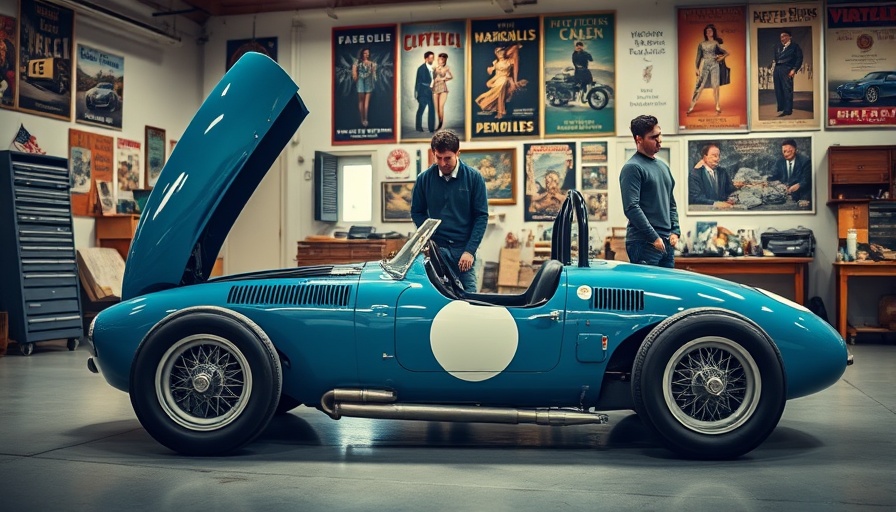
Exploring the 1957 Volkswagen Beetle: A Vintage Icon
The 1957 Volkswagen Beetle is not just a car; it symbolizes a pivotal moment in automotive history. Designed originally for the masses, its simple and functional design has captured the hearts of many. Known affectionately as the "Bug," this small car emerged from post-war Germany and quickly became a global phenomenon. Whether it’s the distinctive rounded shape, the robust nature of its parts, or the quirky personality, the Beetle deserves a deeper look, especially as we think about the ongoing importance of vehicle maintenance.
In 1957 Volkswagen Beetle | Jay Leno's Garage, the fascinating history and quirks of this classic car are explored, prompting an insightful look into the maintenance aspects essential for keeping vintage vehicles in top shape.
The Importance of Vehicle Maintenance
Owning a classic car like the 1957 Volkswagen Beetle brings with it a unique set of responsibilities, primarily centered around maintenance. While these vintage cars have a charm that appeals to many enthusiasts, they require regular upkeep to ensure they continue to run smoothly and safely. Understanding how to care for and maintain such vehicles can help owners avoid costly repairs and prolong the life of their cars.
Basic Car Maintenance: What You Need to Know
When it comes to maintaining a classic Beetle, basic car maintenance practices are essential. Here are some foundational tips:
- Oil Changes: Regular oil changes are crucial for keeping the engine functioning well. It's recommended to change the oil every 3,000 to 5,000 miles, depending on driving conditions.
- Fluid Checks: Regularly check and maintain levels of key fluids, including coolant, brake fluid, and transmission fluid. These checks can prevent severe engine damage or brakes failing.
- Brake Maintenance: The brakes are one of the most vital systems in a vehicle. Ensuring that the brake pads and fluids are maintained can help avert accidents and maintain control while driving.
DIY Car Repair and Maintenance Tips
Many Volkswagen Beetle enthusiasts take pride in handling repairs on their own. Here are some essential DIY tips:
- How to Change Your Air Filter: Replacing the air filter is simple and improves engine efficiency. A clean air filter ensures that the engine receives the right amount of airflow.
- How to Inspect Belts and Hoses: Regular inspections of belts and hoses can prevent breakdowns. Look for signs of wear or damage and replace them as necessary.
- Tire Rotation: Regular tire rotation extends the life of tires and improves fuel efficiency. It’s advised to rotate tires every 5,000 to 7,500 miles.
Seasonal Car Maintenance Checklist
Given that weather and seasonal changes can impact vehicle performance, developing a seasonal maintenance checklist is vital for car enthusiasts:
- Spring: Focus on checking the coolant system, wiper blades, and brakes after a winter season.
- Summer: Inspect the tires and ensure the air conditioning system is functioning efficiently for those hot days.
- Fall: Prepare your car for colder weather by checking batteries, antifreeze levels, and making sure the heater works properly.
- Winter: Keep an eye on tire tread depth, replace windshield wipers, and ensure that antifreeze levels are sufficient.
Car Care Apps: Tools for the Modern Enthusiast
In today's digital age, numerous apps can help streamline vehicle maintenance:
- Best Car Maintenance Apps: Applications can track service records, send reminders for oil changes, and help manage an auto maintenance schedule. Consider apps like “Car Minder” or “AUTOsist” for comprehensive vehicle tracking and tips.
How to Improve Fuel Efficiency in Your Beetle
Optimizing fuel efficiency is another beneficial aspect of vehicle maintenance. For Beetle enthusiasts, here are several tips:
- Ensure Proper Tire Inflation: Tires that are inflated to the correct pressure can improve gas mileage significantly.
- Frequent Oil Changes: As mentioned before, clean oil helps the engine run smoothly, which can also positively impact fuel efficiency.
- Driving Habits: Smooth acceleration and deceleration can contribute to better fuel economy in the long run.
Final Thoughts: Embracing the Beetle with Care
Classic cars like the 1957 Volkswagen Beetle represent more than just transportation; they connect us to our automotive heritage. By applying basic car maintenance principles and embracing DIY repair tips, owners can preserve these beloved vehicles for generations to come. The love for vintage cars is timeless, much like the appeal of the Beetle itself. It is crucial, however, to stay informed and proactive about maintenance to keep the charm alive.
 Add Row
Add Row  Add
Add 




Write A Comment